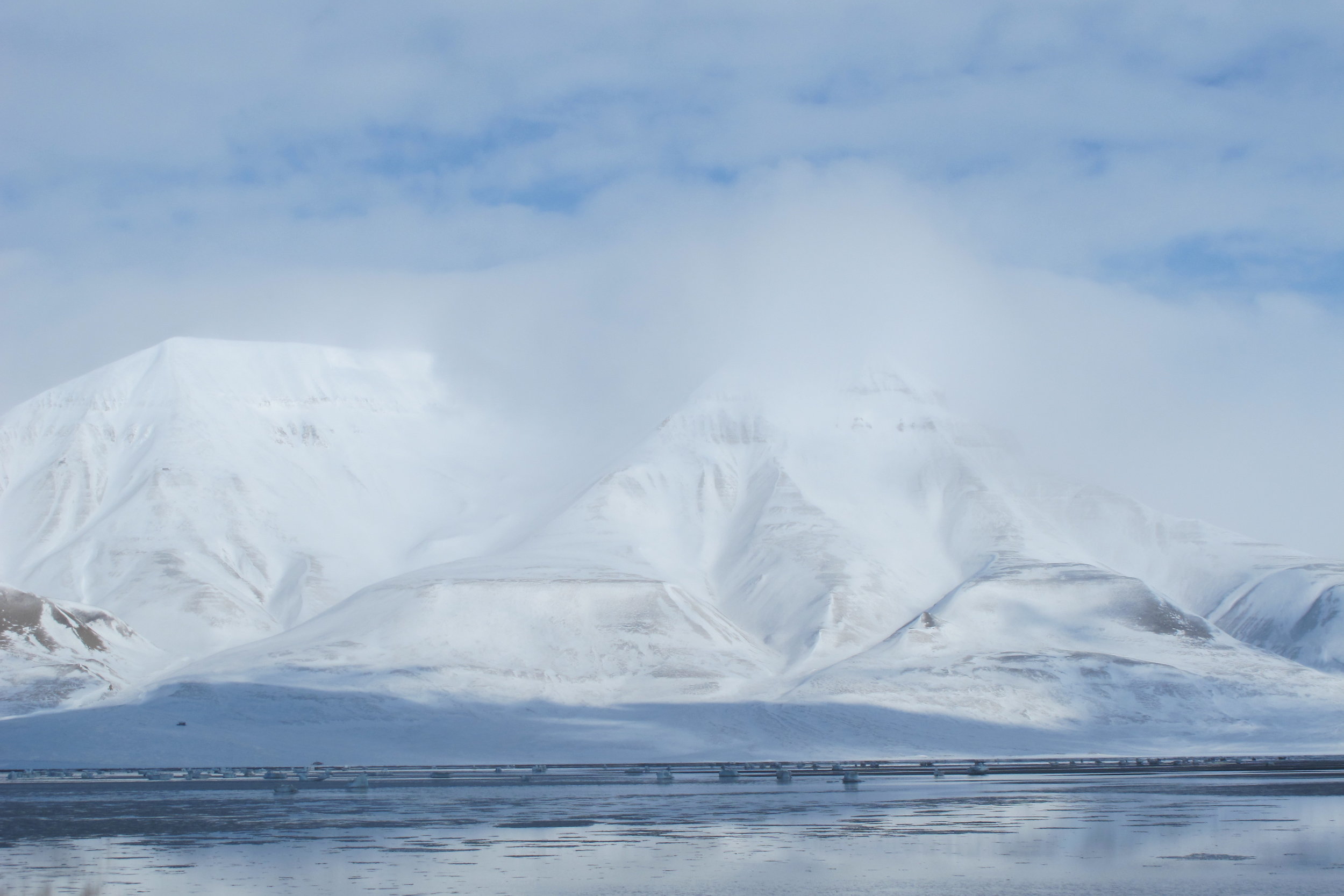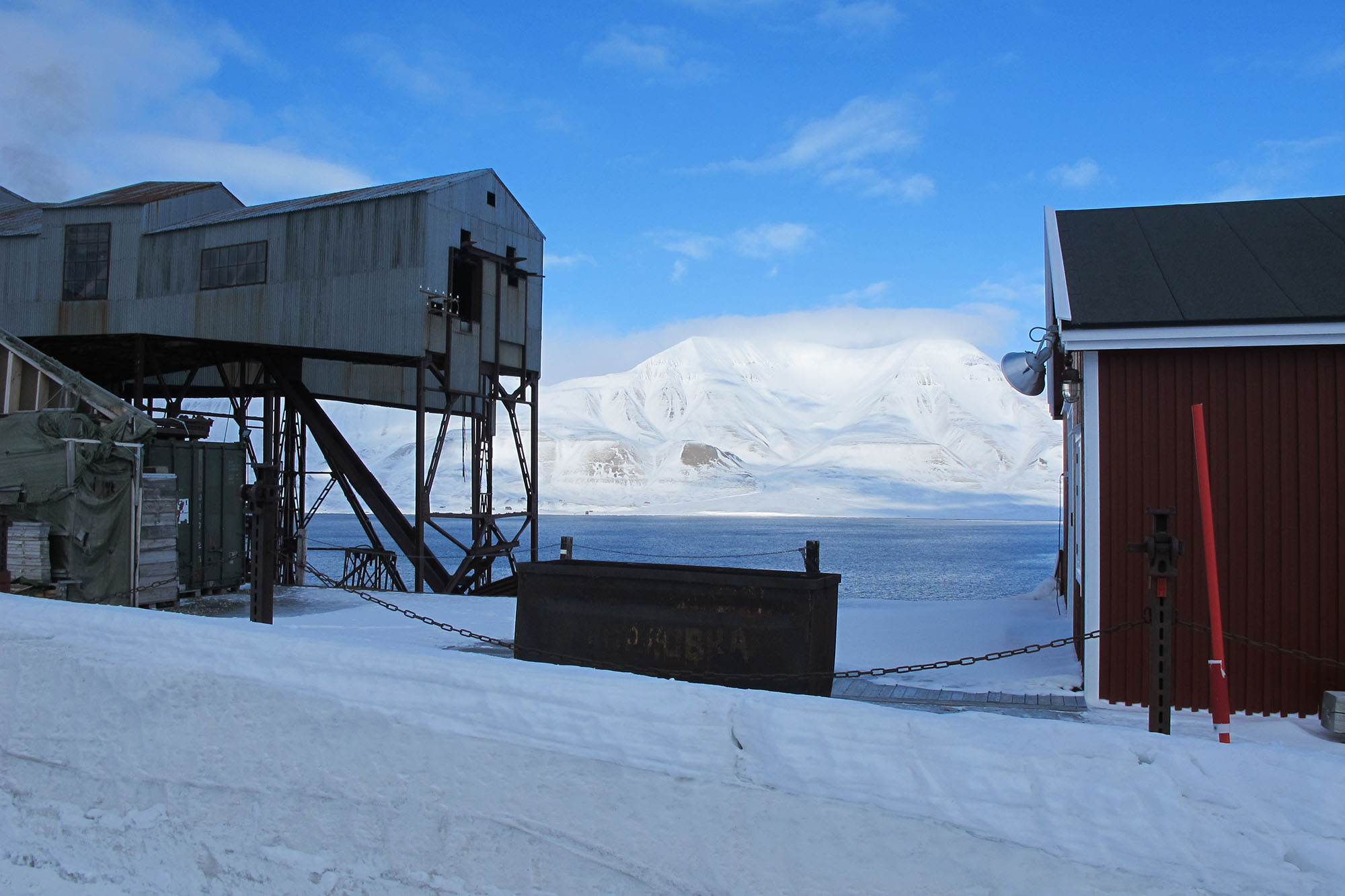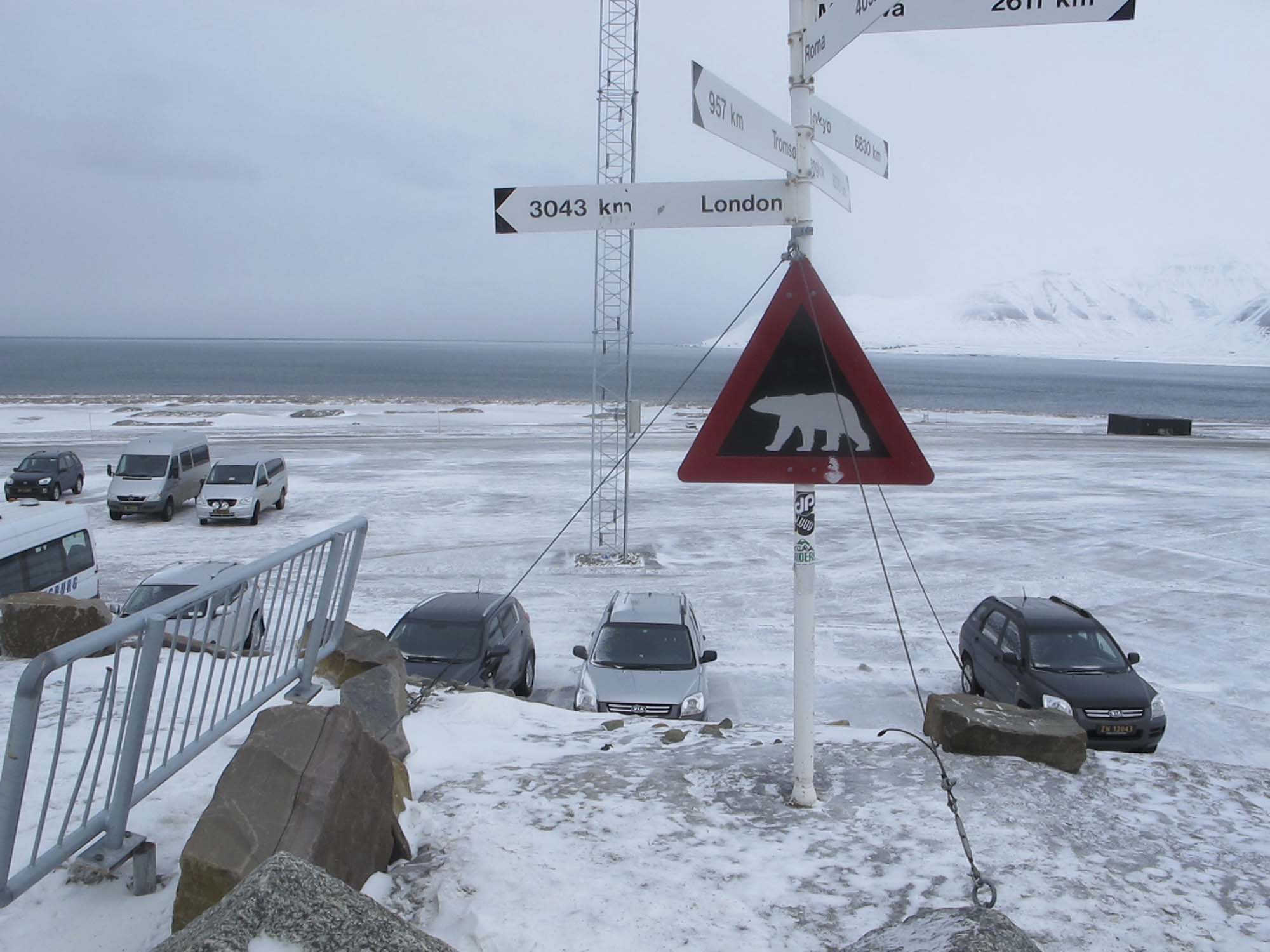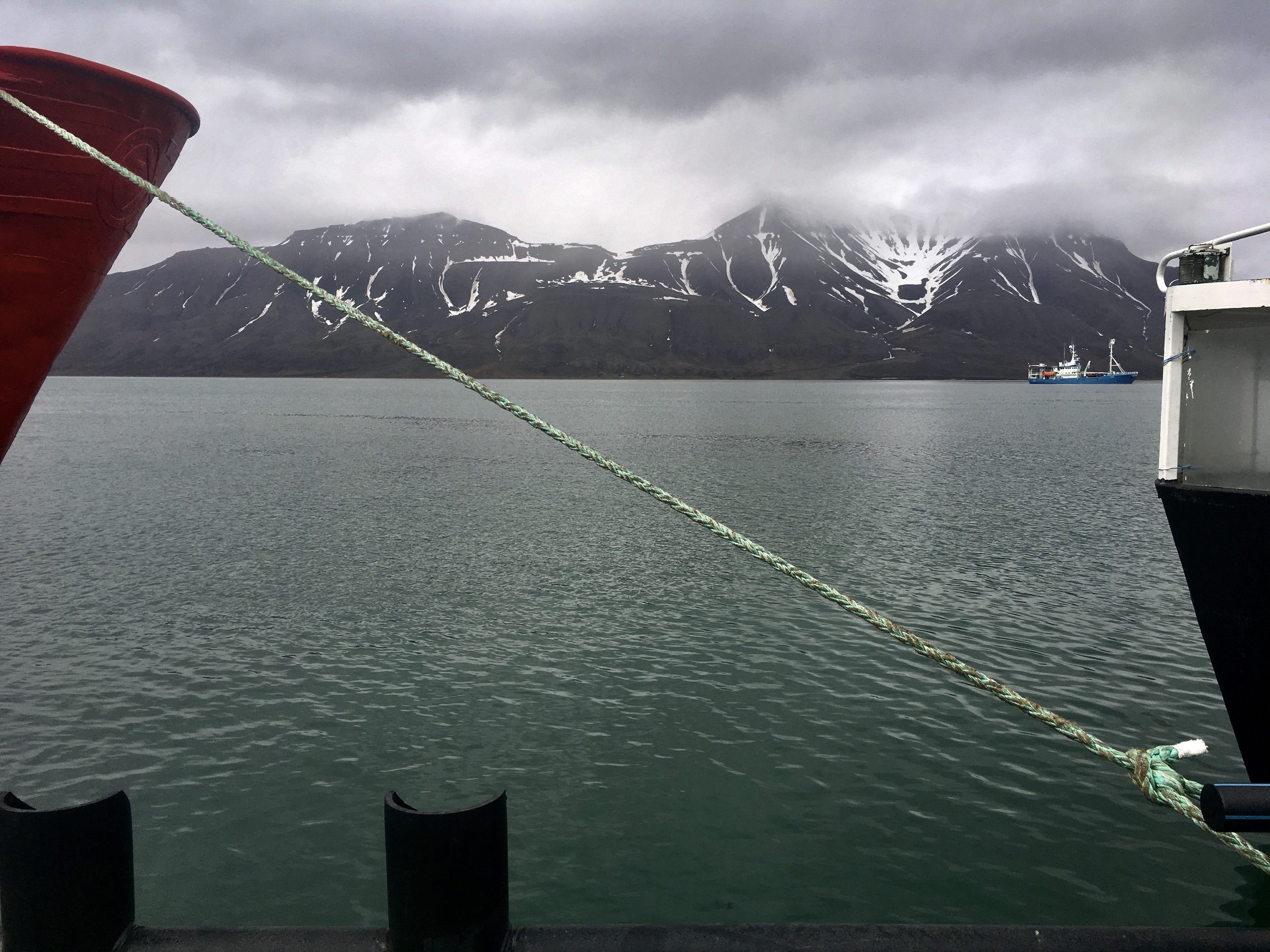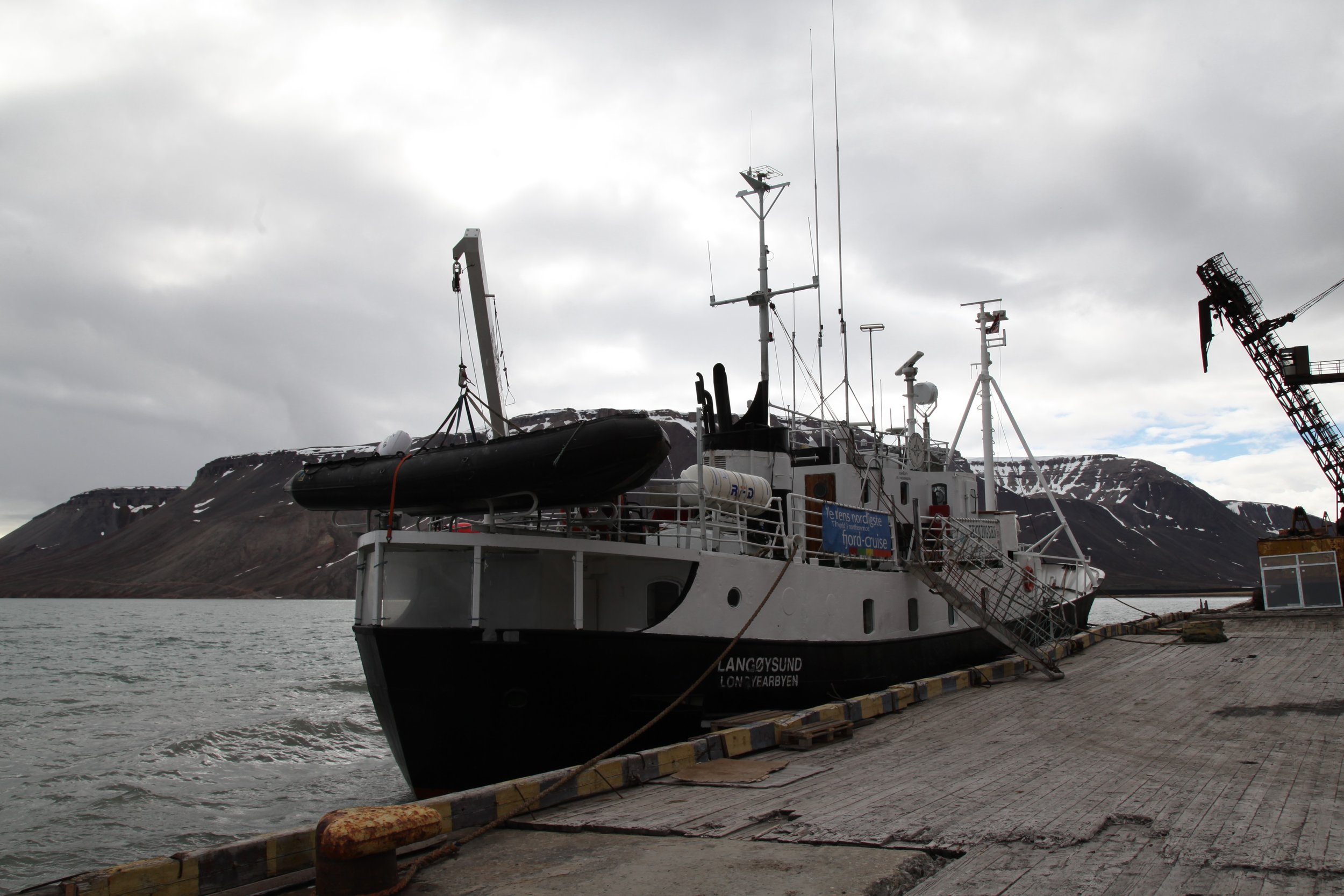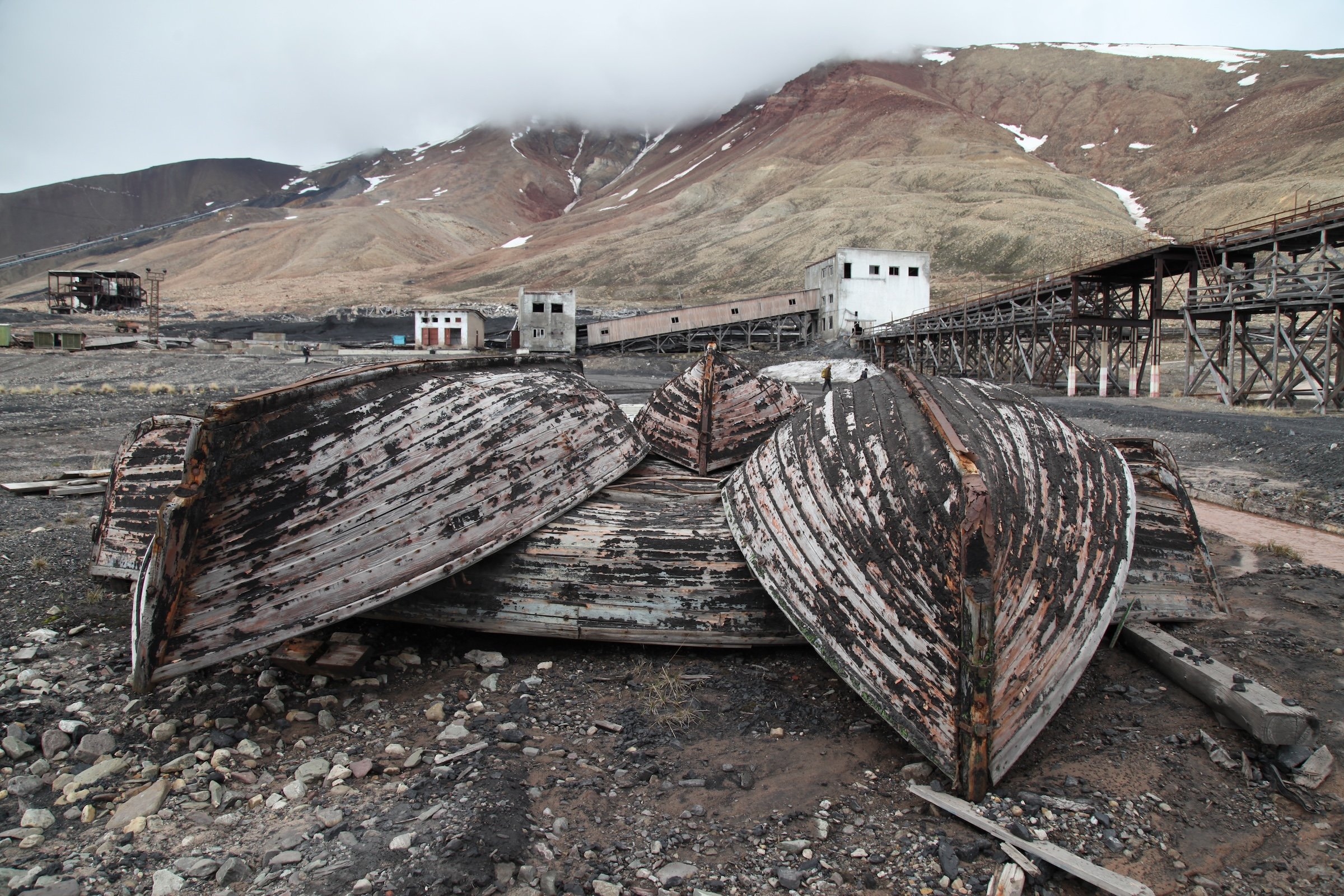In the Wake of Louise Arner Boyd
Svalbard, April 2015/ Pyramiden, June 2017
In April, 2015, one year after my first voyage In the Wake of Louise Arner Boyd, I again went to the Arctic to renew my search for evidence of Boyd’s explorations. I flew London to Oslo and then Oslo to Longyearbyen, Svalbard (formerly Spitzbergen). I knew Boyd had visited Spitzbergen. She wrote:
“In August 1924, I visited Spitsbergen and the pack ice to the northwest in a small Norwegian tourist vessel. This trip gave me my first view of the Arctic regions and laid the foundations for four expeditions subsequently carried out under my leadership.”
“The coast of Spitsbergen was sighted at 2:00 p.m. on September, 1, just 62 hours from the time that we had set our course off the Greenland Coast. We took time out for a stop at Sentinelle Banks for a little salmon fishing, and it was 2:00 a.m. when we anchored off the Norwegian coal-mining village of Longyear City, (now Longyearbyen – my insert) on Advent Bay in Ice Fiord. Later in the morning the ship was moved to the coaling station to take on fuel, while the members of the expedition visited the mining village. Since I had been there a number of times before, I had the pleasure of renewing old friendships.”
After the disappointment of not finding the presence of Louise Arner Boyd in the Polar Museum, Tromsø (2014) where they specialise on Arctic explorers (male explorers only) I wondered whether I might find information about her presence here at the Norwegian Polar Institute, Longyearbyen, Svalbard. I knew that the University of Svalbard’s research was more specifically about climate mapping and environmental monitoring in the Arctic, however, I wondered if they would at least have evidence of Boyd’s amazing photographic images of glaciers and fiords that were now beginning to be used in climate research in America.
I asked if they had any information, or evidence of Louise Arner Boyd’s scientific research carried out on her voyages to the Arctic regions including Svalbard. They showed me how to access their Polar Archives and I typed in Boyd’s name – nothing. I typed in the ship she had sailed on ‘Veslekari’, again nothing. I wondered how this could be. No sign of the presence of Louise Arner Boyd. What does a woman have to do to be acknowledged in the important academic spaces of Arctic exploration.
Anne Lydiat, Norwegian Polar Institute, Longyearbyen, Svalbard. Photo: © Chris Wainwright, 2015
North Pole Expedition Museum, Longyearbyen, Svalbard. Photo: © Chris Wainwright, 2015
Finally on my last day I visited the North Pole Expedition Museum also in Longyerabyen, Svalbard and asked if they had heard of Louise Arner Boyd and whether they had any information about her polar voyages. The young woman at the desk said they did not have anything. I walked around the museum and just as I was leaving I recognised photographs and text relating to Boyd’s flight over the North Pole in 1955.
Poster for MS Langøsund, Svalbard, 2015
On board MS Langøsund, Pyramiden, Photo: © Anne Lydiat, 2015
MS Langøsund Porthole, Svalbard, Photo: © Anne Lydiat, 2015
MS Langøsund Porthole, Svalbard, Photo: © Anne Lydiat, 2015
I had attempted to get to Pyramiden in the winter of 2016 but the sea ice was too impenetrable and so this voyage was my second attempt to land there on board the MS Langøysund.
Pyramiden is a mostly abandoned mining settlement with its infrastructure and buildings still in place. It is located in Bildfjorden, opposite the Nordenskiöld Glacier on the archipelago of Svalbard and was founded by Sweden in 1910 and sold to the Soviet Union in 1927. Owned by the state-owned Russian mining company Arktikugol Trust, who also own the mining settlement of Barentsburg, Pyramiden, once had over 1,000 inhabitants. The series of photographs/videos I made on this voyage were an attempt to capture the absence of the presence of a once thriving community.
Wake, Svalbard. Photo: © Anne Lydiat, 2015




